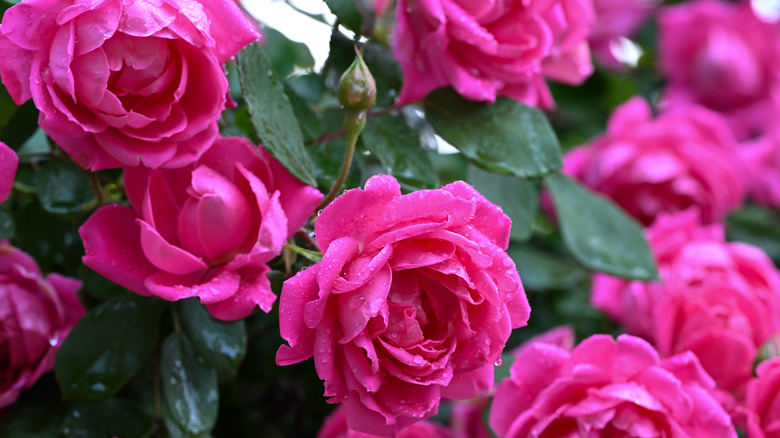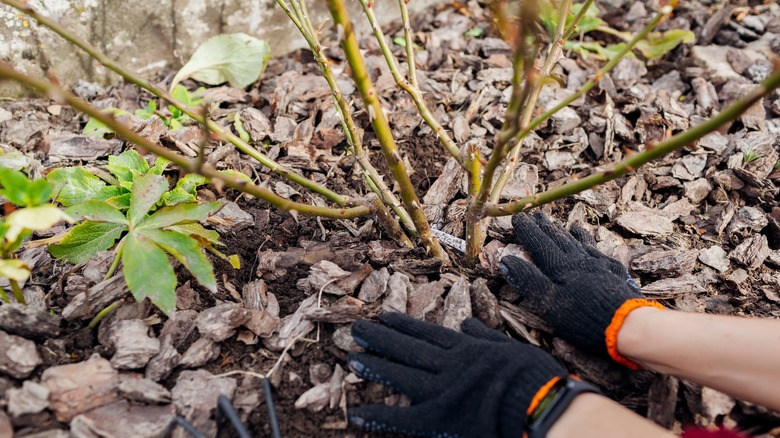The Best Method For Watering Your Roses
You can plant roses once and have them for years, but knowing the best timing and method can be the secret to lush, colorful blooms. Roses need plenty of water to keep their roots hydrated, supporting large, fragrant blossoms and healthy, thick foliage. However, the key to watering roses effectively is to water them early in the day. This allows the plants to absorb moisture during the cooler morning hours, which helps prevent water from evaporating in the midday heat and gives leaves time to dry. Early morning watering also reduces the risk of diseases like black spot and mildew that often result from prolonged wet foliage, especially when temperatures drop at night.
Instead of watering the entire plant from above, aim your hose or watering can directly at the base of each rose bush. This directs the water to the roots where it's needed most. Frequent soaking of the leaves can encourage fungal growth, so it's best to avoid this unless you're giving the plant an occasional rinse.
The water needs of roses vary based on soil type, climate, and surrounding plants. In temperate areas, about 4 to 5 gallons per week — roughly two inches — works well. However, sandy soil or extreme heat may require more frequent watering. To avoid overwatering, regularly check the soil moisture. It should feel damp but not muddy; muddy soil indicates too much water. Light watering can lead to shallow roots, making roses vulnerable to temperature extremes.
Using mulch and monitoring soil for optimal water retention
Beyond having a watering schedule, mulching is an easy way to retain soil moisture and regulate temperature, ensuring roses receive consistent hydration even in warm weather. Applying a 2- to 3-inch layer of mulch around each rose bush can help cut down on watering by as much as 50%. Mulch reduces evaporation, shades the soil, and can lower soil temperature by 10 to 20 degrees, creating a cooler and more stable environment for rose roots. In addition to holding moisture, mulch also suppresses weed growth, meaning less competition for water and nutrients around your roses. Natural mulch options like aged sawdust, grass clippings, or compost are great choices, and you can even use shredded newspaper if that's readily available. Yellow leaves can be a sign that something's off; if they're soft and limp, your roses might be getting too much water, while dry, crispy yellow leaves suggest dehydration.
Some roses are sensitive to extreme conditions, and a little extra monitoring will help them flourish through seasonal changes. It's also a good idea to deadhead roses as they bloom and fade, especially just before winter. By pairing good watering practices with smart mulching and close attention to soil health, you can give your roses a steady supply of the moisture they need to thrive without overwatering. With these techniques, your roses will reward you with lush foliage and stunning blooms season after season.

